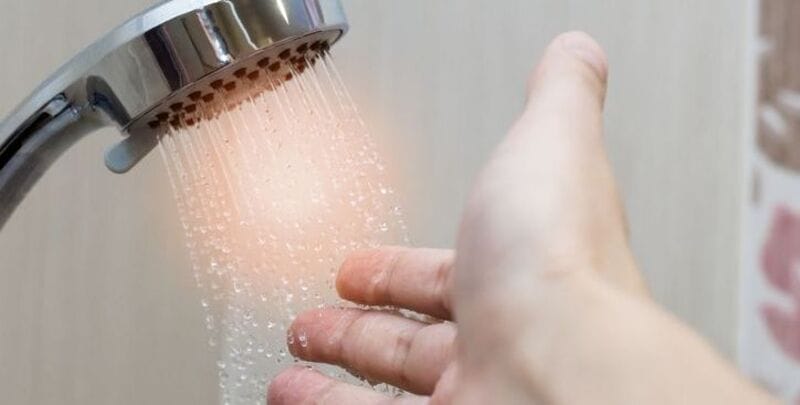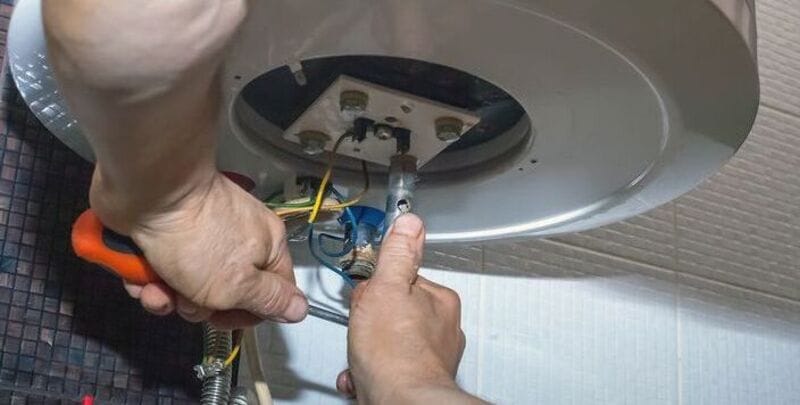
Ways to Adjust a Hot Water Tempering Valve
Hot and cold water tempering valves are a vital component of your water heating system, responsible for safeguarding both the safety and efficiency of your hot water supply.
By blending and mixing hot and cold water, these valves ensure that the water reaching your taps maintains a consistent and safe temperature. To guarantee their optimal performance, occasional adjustments are required.
In this comprehensive guide, we’ll take you step by step through adjusting your hot water tempering valve, empowering you to maintain a reliable and safe hot water supply for your home. Let’s delve into the essential ways to make these adjustments for the well-being of your household.
Understanding Hot Water Tempering Valves
Hot water tempering valves are crucial devices within your water heating system, specifically designed to meticulously regulate the temperature of the water flowing from your taps.
These tempering valves achieve this by blending hot and cold water to maintain the water at a steady and safe temperature. Their fundamental purpose is to prevent and avoid scalding or incidents by enforcing a preset limit on the water temperature.
The significance of installing hot water tempering valves becomes evident when considering the potential dangers of boiling or scalding water. Scalding hot water accidents, prevalent with young children and the elderly, can result in severe injuries.
Installing these valves plays a pivotal role in creating a secure environment within your home by ensuring that the water temperature does not surpass a predetermined safe limit.
Understanding the function of hot water cap tempering valves is essential for maintaining a comfortable and safe hot water supply. Whether filling a bathtub, washing dishes or simply washing your hands, these valves work silently in the background to deliver water at a temperature that balances safety with functionality.
This understanding of cap tempering valves empowers homeowners to appreciate the role of these valves in their daily lives. It underscores the importance of periodic checks and adjustments to ensure optimal performance.

Safety Precautions Before Adjustment
Professional services are crucial in ensuring safety precautions are meticulously followed before adjusting your hot water tempering valve.
These precautions are imperative to establish a secure working environment and mitigate potential risks associated with the adjustment process.
Professional technicians prioritise safety by adhering to the following measures:
- Water heater shutdown: Turning off the water heater is essential before making any adjustments. For electric heaters, switch off the circuit breaker, and for gas heaters, turn the control knob to the “off” position. This precaution eliminates the risk of burns and prevents accidental heating element activation during the adjustment.
- Ventilation considerations: Adequate ventilation is crucial in the working area. Professionals ensure proper airflow, especially in confined spaces, by opening window doors or using fans to disperse potential gas buildup. Proper ventilation minimises the risk of exposure to gas fumes, ensuring a safer working environment.
- Personal protective equipment (PPE): Technicians prioritise personal safety by wearing appropriate PPE, including gloves to protect hands from sharp edges, hot surfaces, and potential contaminants, and safety glasses to safeguard eyes from debris, splashes, or unforeseen accidents during the adjustment.
- Gas leak inspection: Professionals thoroughly inspect the area for any signs of gas leaks before proceeding, especially when dealing with gas water heaters. If you detect or suspect a gas leak, immediately evacuate and contact the gas provider for assistance.
- Stability and accessibility assurance: Technicians position themselves on stable surfaces while working on the water heater, ensuring a well-lit environment and easy accessibility to the unit. It minimises the risk of accidents and contributes to a smoother adjustment process.
- Hot water discharge management: Professionals caution against hot water discharge during the adjustment. Before commencing the process, they familiarise themselves with the location of the drain valve and ensure a hose is attached to direct hot water safely away from the working area.
Professional services create a controlled and secure environment for adjusting hot water tempering valves by strictly adhering to these safety precautions. Prioritising safety protects individuals during the adjustment process and contributes to the overall well-being of households.
Locating the Hot Water Tempering Valve
Locating the hot water tempering valve is crucial in adjusting your water heating system. Depending on your water heating system type, the tempering valve may be in different locations.
Here’s a guide to help you find it:
- Traditional tank-style water heaters: In traditional tank-style water heaters, the tempering valve typically sits near the top of the unit. Look for a valve on the hot water outlet pipe coming out of the top of the tank. It may be installed on the side or top, close to where the hot water leaves the tank.
- Tankless water heaters: Manufacturers often integrate the tempering valve into the unit for tankless water heaters. Check the manufacturer’s manual for your specific tankless system’s exact location. It may be on the hot water outlet pipe or within the unit housing.
- Consult your system’s manual: Your water heating system’s manual is the most reliable source for locating the tempering valve. It provides specific information about the components and their locations. If you need the manual, manufacturers often offer them online, or you can contact the manufacturer directly.
- Check near the water heater outlet: Look for a mixing valve or a device that blends hot and cold water. Follow the hot water pipe from the water heater towards your taps; the tempering valve should be along this route.
- Inspect the hot water line leading to the taps: Another common location is on the hot water line leading to your taps. Check under sinks or near other hot water outlets in your home. The tempering valve may be easily accessible in these areas.
Remember that the appearance of the tempering valve can vary, but it typically most often has an adjustment screw and a locknut. If you still need to decide about the installed tempering valve and its location, contact the manufacturer’s customer support for assistance.
By accurately locating the hot and cold water tempering valve, you set the stage for a successful adjustment process, ensuring you can maintain a safe and consistent water temperature in your home.

Determining the Current Setting
Ensuring an accurate adjustment of tempered water for hot water systems often begins by checking the current temperature setting of the hot water system and replacing the tempering valve. You can accomplish it using a thermometer or temperature gauge.
Understanding the baseline temperature empowers you to make informed adjustments for achieving your desired hot water temperature.
Prioritising safety is paramount when undertaking the step-by-step adjustment process for water heaters. Professional services play a crucial role in implementing safety precautions throughout this procedure.
- Expert power supply shutdown: Begin by securing the water heater’s safety through professional expertise. For electric heaters, a professional service ensures the secure shutdown of the power supply by switching off the circuit breaker. In the case of gas heaters, professionals turn the control knob to the “off” position, mitigating potential accidents and burns.
- Controlled hot water draining: Professionals recommend draining a small amount of hot water to alleviate pressure within the system before adjusting the valve. They skillfully attach a hose to the drain valve, directing the water flow into a suitable container. This careful step facilitates a smoother adjustment process and minimises the risk of burns during subsequent steps.
- Precise valve adjustment: Professional services adjusted the tempering valve with the water heater safely turned off, and the system depressurised. Using specialised tools like adjustable wrenches, they loosen the locknut and meticulously turn the adjustment screw to achieve the desired temperature. Professionals emphasise gradual adjustments, allowing the water tank temperature to stabilise before further modifications.
- Thorough temperature testing: After the adjustment, professionals expertly turn the water heater back on and allow it to reach the desired temperature. To ensure consistency, they meticulously test the water temperature at various taps. Employing accurate instruments such as thermometers or temperature gauges, professionals verify that the water temperature at each tap aligns precisely with the adjustments made, providing a comprehensive safety check.
Professional services bring technical expertise and prioritise safety measures at every water heater adjustment process step. Their attention to detail and commitment to safety ensures a secure and reliable outcome, mitigating potential risks and hazards associated with DIY attempts.
Troubleshooting Common Issues
Despite careful adjustments, issues may arise. Common problems include leaks, temperature inconsistencies, or unusual noises.
If encountered, consult your system’s manual or consider seeking professional assistance. Solutions to plumbing issues may include tightening connections, replacing faulty components, or adjusting settings.
Maintaining the safety of your hot water tempering and mixing valve is paramount, and professional services play a crucial role in implementing robust safety precautions.
Here are vital aspects of regular maintenance focused on ensuring safety:
- Scheduled professional checks: Enlist the services of professionals to conduct regular inspections on your tempering valve. It is advisable to schedule these checks at least twice yearly, considering usage patterns and water quality. Professional inspections enable the early detection of potential issues, preventing them from escalating into safety hazards.
- Professional leak inspections: Engage professionals to conduct thorough inspections of the tempering valve and its surroundings for any signs of leaks. Leaks not only compromise the efficiency of the valve but also pose a risk of water damage. Prompt, professional intervention is crucial for tightening connections or replacing faulty components to maintain the valve’s effectiveness.
- Temperature verification by experts: Ensure that professionals verify the temperature settings on the tempering valve to align with your desired hot water temperature. Experts can accurately measure water temperatures at various taps using thermometers or temperature gauges. Professionals can make any necessary adjustments to the valve to uphold the optimal temperature for safety.
- Expert adjustment of the valve: In case of observed changes in water temperature or functionality issues, rely on professionals to adjust the tempering valve. Following a meticulous step-by-step process outlined in the guide, professionals can make gradual changes and test water temperatures at different outlets, ensuring the valve operates effectively and safely.
- Timely replacement of components: Professionals can assess the condition of tempering valve components, identifying signs of corrosion, rust, or visible damage. Worn-out parts can compromise the valve’s functionality and effectiveness. Engage professionals to promptly replace these components, preserving the safety and reliability of the valve.
- Professional system flushing: Professionals can flush the hot water system periodically to eliminate sediment and mineral deposits that may accumulate over time. Sediment can negatively impact the valve’s performance and lead to clogs. Professionals can provide guidance based on your water heater’s manual to execute this flushing process safely.
- Thorough documentation by professionals: Enlist the assistance of professionals in documenting maintenance activities, noting inspection dates, adjustments, and component replacements. This comprehensive documentation serves as a valuable reference for tracking the tempering valve’s history and aids in identifying patterns or recurring issues, contributing to a proactive approach to safety maintenance.
- Consult professional assistance if needed: If you encounter complex problems or need clarification on specific maintenance tasks, feel free to seek professional assistance. Certified technicians can inspect thoroughly, diagnose problems, and ensure that your hot water system is in optimal condition.
By incorporating these regular maintenance tips into your routine, you contribute to the longevity and efficiency of your plumbing services and your hot water tempering thermostatic mixing valve.

Maintain a Safe Water Temperature
In summary, maintaining a safe and comfortable water temperature is a crucial aspect of your daily routine and, most importantly, a critical factor in ensuring the safety of your household.
The insights provided in this comprehensive guide on adjusting hot water tempering valves empower you to take control of your water heating system, making informed decisions that directly impact the well-being of your family. Consistency is key.
Regular checks from professional technicians on your tempering valve should become a routine part of your home maintenance schedule.
This proactive approach ensures a consistently reliable and safe hot water supply, providing you and your loved ones with the comfort and security you deserve.
So, embrace the knowledge gained from this guide, share it with others, and continue to prioritise the safety and comfort of your home through regular checks on your hot water unit’s tempering valve.
Please note: This information is provided for advice purposes only. Regulations differ from state to state, so please consult your local authorities or an industry professional before proceeding with any work. See our Terms & Conditions here.
Published: 9 Apr, 2024